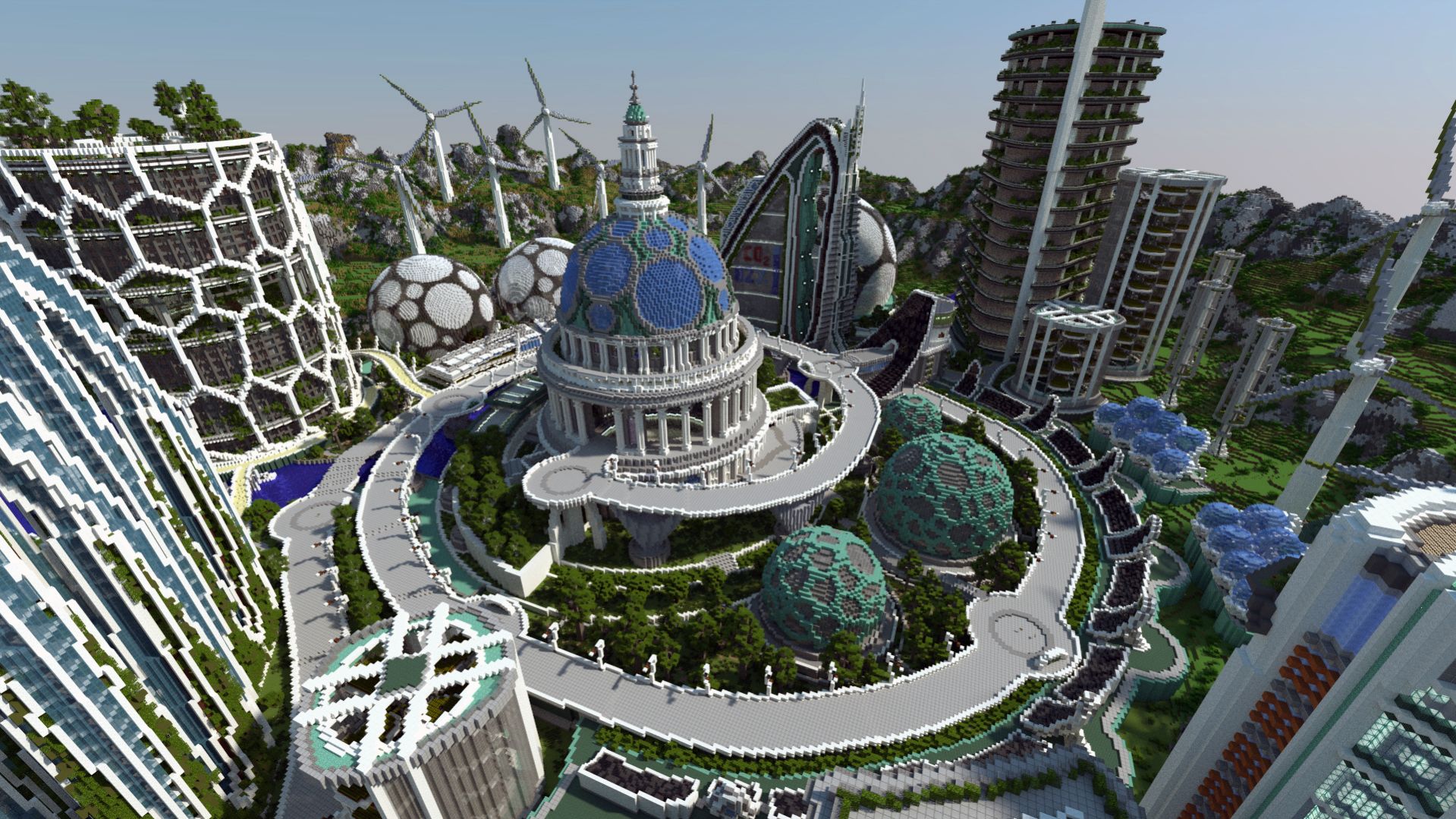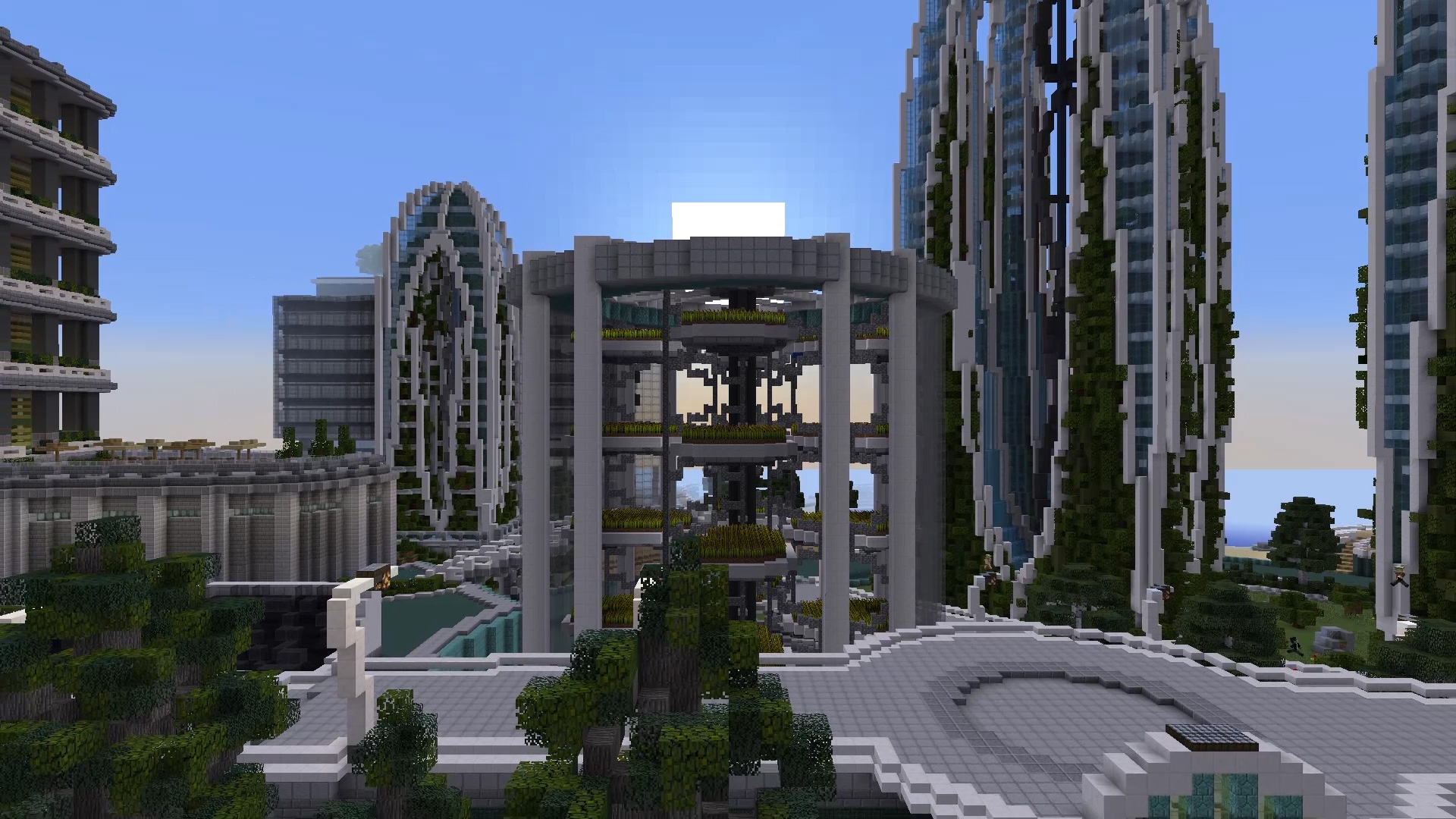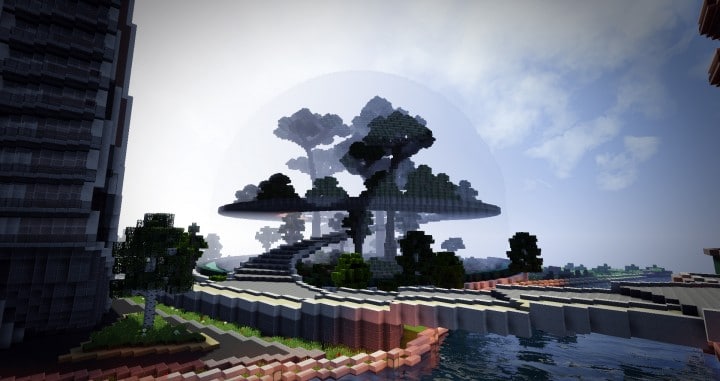Games for Cities
Climate Hope City (2015)
London [UK]
Developed by:
A mapped 3D digital environment that utilises entirely sustainable existing urban technologies and energy systems to create a future low carbon city, displayed as an interactive and intriguing learning environment for players to adventure through and be inspired by.

Climate Hope City is a Minecraft city developed as part of the Guardian’s ‘Keep it in the Ground’ campaign, which presents positive technology addressing the climate change challenges we all face. Designed by a team of architects, artists and designers, the map is freely available for download online, but you have to own Minecraft to run it. While it is a serious game with real educative potential and reach, it presents this information to players through an intriguing environment that they can interact with and explore.
The team at Blockworks have designed a map that is comprised of entirely sustainable urban technologies throughout. This includes the green technologies we know like solar-, wind-, and hydro-power, vertical farms and green roofs (which are all employed throughout), to the less familiar kinetic pavements and carbon scrubbers. The interesting thing is that while these technologies appear futuristic, they all exist in reality, at least at a prototyping stage. Players are able to walk around and observe these different technologies in action, and even do things like turn off wind-power generators (to avoid damage during heavy winds) and observe the impact that this has on other power generating systems.
Climate Hope City is another great example of the ways that gaming technology is being used by professionals, firstly to prototype real-world urban solutions, and secondly to teach valuable sustainability concepts to players. With Minecraft having a relatively young player base, this city is intended to inspire a new generation to think sustainably. The medium of games has been shown to be successful in building behavioural change as well as conceptual clarity. Players are encouraged to design their own Minecraft cities of the future, in a kind of open-source contribution to potential solutions.


